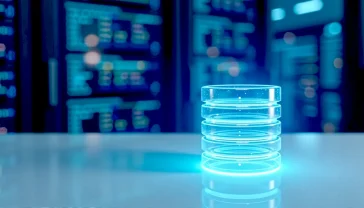More Than a Uniform: The Story of Allied Military Dress, from Red Coats to Digital Camo
Discover the evolution of military uniforms. This comprehensive guide covers everything from the history of ceremonial dress to the cutting-edge tech in today’s combat gear.

This post may contain affiliate links. If you make a purchase through these links, we may earn a commission at no additional cost to you.
Walk through central London on a summer’s day, and you can’t miss them. Stood ramrod straight outside Buckingham Palace, the soldiers of The Queen’s Guard are a picture of British tradition. Their blazing red tunics and towering bearskin hats seem to belong to another century. They are, in a word, iconic. But they’re only one side of the story.
Miles away, in the wind-swept hills of a training area, another British soldier lies hidden. Dressed head-to-toe in a complex pattern of greens, browns, and beiges, they blend almost perfectly with the landscape. Their uniform isn’t about being seen; it’s about not being seen. It’s a life-saving tool, packed with technology that would seem like science fiction to that soldier in the red coat.
From the parade ground to the battlefield, military uniforms tell a fascinating story. They’re not just clothes. They are a blend of history, psychology, and cutting-edge science. They represent a nation’s identity, a soldier’s pride, and the ever-changing face of warfare itself. This is the story of how the uniforms of the UK and its allies evolved from the bright colours of history to the smart fabrics of tomorrow.
The Why of the Wear: What’s a Uniform For?
Before we march through history, let’s get the basics straight. Why do soldiers wear uniforms at all? It boils down to three key things: identification, inspiration, and protection.
Who Goes There? Friend or Foe
The most basic job of a uniform is to tell you who’s on your side. In the smoke and chaos of an old-world battlefield, seeing a splash of your army’s colour was a lifeline. A uniform instantly separates friend from foe. But it goes deeper than that.
Insignia, badges, and flashes tell a soldier’s story at a glance. Rank slides on the chest or shoulders show who’s in charge. Regimental badges on a cap or collar connect a soldier to a long line of history, from the Welsh Guards to the Parachute Regiment. These little details are a visual language understood by every member of the armed forces.
A Symbol of Unity and Pride
Putting on a uniform changes how a person feels. It strips away individual differences and fosters a sense of belonging to something bigger than oneself. This is crucial for building a cohesive team that can trust each other in the toughest situations. It’s a powerful psychological tool.
A smart, well-kept uniform instils discipline and pride. There’s a reason soldiers spend hours polishing their boots and pressing their trousers. It’s about showing respect for their unit and for themselves. For the enemy, a disciplined, uniformly dressed army can be an intimidating sight, suggesting an organised and formidable force.
A Tool for Survival
Most importantly, a modern combat uniform is a soldier’s first line of defence. It has to do a lot of jobs at once:
- Protect from the elements: Keeping a soldier warm in the cold, cool in the heat, and dry in the rain.
- Provide camouflage: Helping the wearer blend into their surroundings to avoid being seen.
- Carry essential gear: From ammunition and water to radios and medical kits.
- Offer protection: Modern uniforms often incorporate flame-retardant materials and are worn with body armour.
The balance between these three purposes—identification, inspiration, and protection—has shifted over the centuries, shaping the uniforms we see today.
From Scarlet to Khaki: A Brief History of the British Uniform
The story of the modern military uniform is, in many ways, the story of the British Army.
The Age of the Red Coat
For over 200 years, the British soldier was known as a “Redcoat.” This tradition began in 1645 with Oliver Cromwell’s New Model Army, the first truly professional, centrally controlled army in England. Red was chosen for a very practical reason: it was one of the cheapest dyes available.
But the red coat soon took on a life of its own. It became a powerful symbol of British military might across the globe. During the Napoleonic Wars in the early 1800s, the Duke of Wellington’s red-coated infantrymen were famed for their discipline. Standing in rigid lines, they would wait for the French to advance before unleashing devastating volleys of musket fire. In these battles, being easily visible wasn’t a disadvantage—it was the point. Generals needed to see where their troops were to command them effectively.
Different regiments were distinguished by the colour of their cuffs and collars, known as ‘facings’. A soldier in a red coat with blue facings belonged to a ‘Royal’ regiment, while green facings might indicate a Light Infantry unit. This was the start of the complex system of regimental identity that continues today.
The Lessons of Empire: The Move to Khaki
As the 19th century wore on, the nature of war began to change. The British Empire was expanding into places like India and Africa, where soldiers faced guerrilla tactics and long-range rifles. Suddenly, standing out in a bright red coat was a very bad idea.
The shift began unofficially. British units fighting on the North-West Frontier of India in the 1850s realised they were easy targets. They started dyeing their white tropical uniforms with tea, mud, or whatever they could find to blend in with the dusty landscape. The Hindi word for dust is ‘khaki’, and a new colour for warfare was born.
The change wasn’t immediate. Many traditionalist officers in London thought khaki was drab and “un-soldierly.” But the brutal reality of the First Boer War in 1880-81 sealed the deal. Boer farmers, expert marksmen in their dull civilian clothes, could hide in the rocky terrain and pick off red-coated British soldiers from a distance. The lesson was learned the hard way. By the turn of the 20th century, khaki was the standard for active service. The scarlet tunic was reserved for the parade ground.
The World Wars: Uniformity for a Global Conflict
World War I and World War II saw the standardisation of the military uniform on a massive scale. The iconic British ‘Tommy’ of WWI wore a Service Dress tunic and trousers made of thick wool serge, with a distinctive stiff-peaked cap. The famous Brodie helmet, a shallow steel bowl, was introduced in 1915 to protect against shrapnel.
By World War II, this had evolved into the more practical Battledress. It consisted of a short wool blouse and high-waisted trousers, designed to be less restrictive and save on material. It was worn by soldiers across the Commonwealth and became a symbol of the Allied war effort. This was an outfit designed for a mechanised war, meant to be functional in the back of a truck or the turret of a tank.
The Science of Hiding: The Evolution of Camouflage
The move to khaki was the first step in military concealment, but the real revolution was camouflage. The word comes from the French verb camoufler, meaning ‘to disguise’.
From DPM to MTP: A British Success Story
For nearly 50 years, the British Armed Forces were defined by their camouflage: Disruptive Pattern Material (DPM). First introduced in the 1960s, its familiar pattern of green, brown, and black splotches was designed for the forests of Northwest Europe, where a potential war with the Soviet Union was expected to be fought. A sand-coloured desert version was also created for conflicts in the Middle East.
DPM was a huge success and became one of the most widely used camouflage patterns in the world. But by the 2000s, its limitations were showing. In Afghanistan, British soldiers were operating in a mixed landscape, moving between green river valleys, dusty deserts, and rocky mountains. They often had to carry two sets of uniforms—woodland and desert DPM—and switch between them.
The solution came from a collaboration with a commercial company called Crye Precision, which had developed a pattern called MultiCam. The British Ministry of Defence adapted this design to create its own unique version: Multi-Terrain Pattern (MTP).
MTP is clever. It uses a palette of seven colours, carefully chosen and blended to work across a wide range of environments. From a distance, the larger shapes break up the soldier’s outline. Up close, the smaller, more detailed patterns help them merge with their immediate surroundings. It’s designed to trick the human eye. Rolled out in 2010, MTP was a game-changer, giving British troops a vital edge.
The Digital Age: Pixels on the Battlefield
While the UK adopted MTP, the US military went down a different path: digital camouflage.
The idea is that small pixelated colour blocks (like the squares on a computer screen) are better at mimicking the dappled textures found in nature than large, soft-edged blotches.
The US Marine Corps were pioneers, introducing their MARPAT (Marine Pattern) in 2002. The US Army followed with the Universal Camouflage Pattern (UCP), a greyish, pixelated design that was supposed to work everywhere, from cities to forests to deserts.
UCP was not a success. The “universal” approach proved to be a master of none; it didn’t hide soldiers very well in most places, especially in the brownish landscapes of Afghanistan. By 2019, the Army had replaced it with the Operational Camouflage Pattern (OCP), which looks very similar to the UK’s MTP. It was a clear sign that the multi-terrain concept had won out.
A Tour of Allied Uniforms: Tradition and Variation
While they share a common purpose, each allied nation has its own unique uniform traditions.
The United Kingdom: A Tale of Three Services
- British Army: The Army has the widest variety of uniforms. Combat dress is MTP, but ceremonial dress is a world of its own. Each regiment has a unique history reflected in its attire. The bearskins of the Foot Guards were famously taken from Napoleon’s Imperial Guard at the Battle of Waterloo in 1815. The kilts worn by Scottish regiments hark back to their Highland heritage.
- Royal Navy: Naval uniforms have a history all their own, influencing civilian fashion for centuries. The traditional blue sailor suit with its distinctive collar and bell-bottom trousers was designed for practicality at sea. The bell-bottoms could be easily rolled up for scrubbing the decks. Today, the Royal Navy’s dark blue ceremonial uniforms are a symbol of maritime authority, while their working dress is more practical.
- Royal Air Force (RAF): As the youngest service (formed in 1918), the RAF looked to create its own identity. Its distinctive blue-grey uniform colour, often called ‘air force blue’, was chosen to set it apart from the Army’s khaki and the Navy’s dark blue.
The United States: A Standardised Force
American uniforms tend to be more standardised than their British counterparts. The four main branches (Army, Navy, Air Force, Marine Corps) each have their own distinct look.
- The Marine Corps Dress Blues are one of the most recognisable uniforms in the world. With its high collar and deep blue tunic, it dates back to the early 19th century and is a source of immense pride.
- The US Army recently adopted a new set of “pinks and greens” service dress, a modern throwback to the popular officers’ uniform of World War II, connecting today’s soldiers to the “Greatest Generation.”
The Commonwealth and Beyond
- Canada and Australia: As Commonwealth nations, their uniforms share a British heritage. Both have developed unique camouflage patterns tailored to their home environments. Australia’s distinctive five-colour pattern, for example, is specifically designed for the tones of the outback. Their famous slouch hat, with one side pinned up, is a national symbol.
- France and Germany: European allies have their own proud traditions. The French Army is known for the Képi, a flat-topped, cylindrical cap. It’s also a leader in future soldier technology with its FÉLIN (Infantryman with Integrated Equipment and Communications) system, which fully integrates electronics into the combat uniform. Germany’s modern army, the Bundeswehr, uses a splotchy camouflage called Flecktarn, which is highly effective in temperate woodland.
The Modern Soldier: A System, Not Just a Suit
Today’s combat uniform is more than just a set of clothes. It’s an integrated system of survival.
Layering and Materials
Gone are the days of thick, heavy wool. The modern soldier wears a layering system. This usually starts with a sweat-wicking base layer, followed by a fleece or soft-shell jacket for warmth, and finally a waterproof, breathable outer layer made of materials like Gore-Tex. This allows them to adapt to any climate by adding or removing layers.
The fabrics themselves are marvels of science. They are often flame-retardant, treated with insect repellent, and designed to be tough yet lightweight.
Body Armour and Load Carrying
Over their uniform, soldiers wear protective and load-bearing gear.
- Body Armour: Modern body armour uses plates made of advanced ceramics and layers of tightly woven fibres like Kevlar. It’s designed to stop rifle bullets and shrapnel, and it has saved countless lives. The latest versions, like the UK’s VIRTUS system, are more modular and ergonomic, designed to spread the weight more comfortably and allow for greater movement.
- Load-Carrying Equipment: A soldier needs to carry everything they need to fight and survive. This gear is now attached using a system of webbing loops, known as MOLLE (Modular Lightweight Load-carrying Equipment). This allows each soldier to customise their rig, placing pouches for magazines, grenades, water, and first aid kits exactly where they want them.
The Future of the Uniform: Smart, Adaptive, and Integrated
The evolution of the military uniform is far from over. Scientists and engineers are working on technologies that could redefine what a uniform is and what it can do.
Adaptive Camouflage
The holy grail of concealment is adaptive camouflage—a material that can change its colour and pattern to match its surroundings in real time, like an octopus. While still in the early stages, researchers are experimenting with fabrics that use tiny cameras, electric currents, and light-emitting materials to project the background onto the uniform. It’s incredibly complex, a concept straight out of science fiction, but the potential is enormous.
Smart Fabrics and Wearable Tech
The uniform of the future will be a networked computer. Smart fabrics with woven-in fibre-optic cables and sensors could:
- Monitor a soldier’s health: Tracking heart rate, body temperature, and hydration, and even detecting if they’ve been wounded.
- Generate power: Using kinetic energy from the soldier’s movement to charge batteries for their radios and GPS devices.
- Communicate: The entire uniform could act as an antenna, improving communications.
This information could be displayed on a heads-up display in the soldier’s helmet or on a screen built into their wrist, giving them real-time data about themselves, their squad, and the battlefield.
Exoskeletons
Carrying heavy loads is one of the biggest burdens for a soldier. Exoskeletons—powered frames worn on the outside of the body—could help. These devices can bear most of the weight of a soldier’s pack and equipment, reducing fatigue and injury and allowing them to move faster and further. Prototypes are already being tested by the US Army and others.
A Legacy in Thread
From the disciplined Redcoat standing his ground at Waterloo to the high-tech soldier of the 21st century, the military uniform is a thread that runs through history. It is a canvas on which the story of nations, the evolution of warfare, and the relentless march of technology is painted.
It remains, as it has always been, a powerful symbol. It represents the commitment of the individual to the group, the pride of a regiment, and the identity of a nation. Whether on the grandest parade ground or in the most remote theatre of war, it is more than just a uniform. It is a legacy.
Further Reading
For those interested in delving deeper into the history and details of military uniforms, these resources are highly recommended:
- National Army Museum (UK): An excellent resource for the history of the British Army uniform. https://www.nam.ac.uk/
- Imperial War Museums (UK): Extensive collections and online exhibits covering British and Commonwealth forces in modern conflicts. https://www.iwm.org.uk/
- The Victoria and Albert Museum (UK): While a museum of art and design, the V&A has collections and articles exploring the influence of military attire on civilian fashion. https://www.vam.ac.uk/
- National Museum of the U.S. Army: The official museum for the history of the United States Army. https://www.thenmusa.org/






